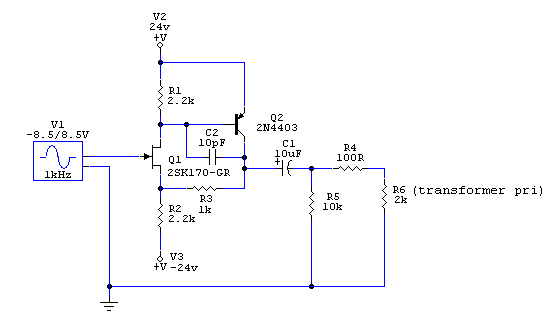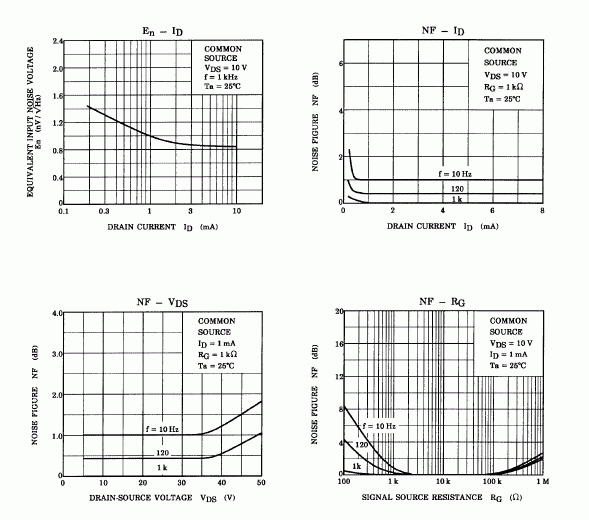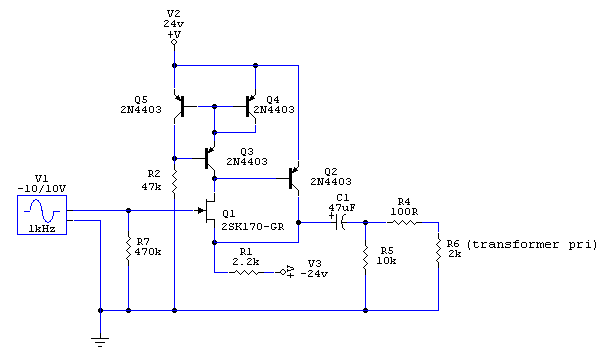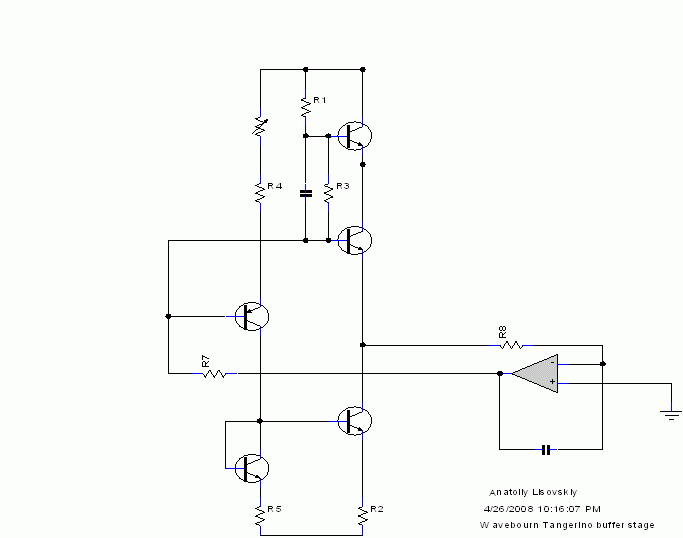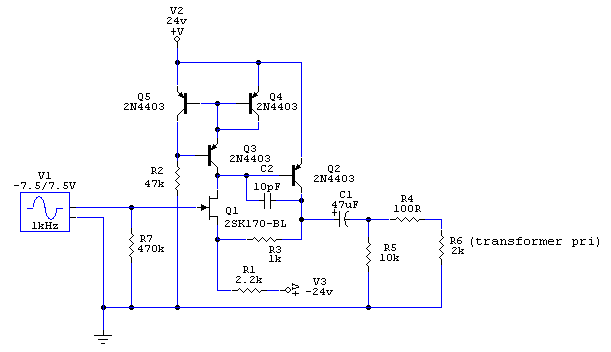Thanks Raf, for offering up some food for thought. We see a lot of DI designs floating around, but a new design is a great starting point for comparison and analysis.
I would agree about not needing any voltage gain. The CountryHick, which I've been loving since I built one, drops some signal voltage in a step down transformer. That of course has the benefit of stepping up current and reflecting an easier load to the DI.
Not being limited by phantom feed resistors, I wouldn't think you'd need to use the 'GR' suffix 2sk170. Even the part that Jensen used with phantom, 2N4393, looks equivalent in IDSS to the the BL version. Which makes me wonder why they used the 2N4393 when the current draw they specify suggests they would have to select parts for the low end of the IDSS spread.
JensenSchematic (PDF)
2N4393 Datasheet(PDF)
Maybe its just FET love, but I wonder if there's a P-Channel FET that would complete the (EDIT: err, I meant CFP, aka Sziklai) and preserve the output drive.
Here's a post from Joe Malone about his discrete FET DI which uses another topology:
[quote author="JLM Audio"]
Are these available yet? What are they going to cost and do they sound much different sonically to the original Active DI's? Good call on the new sockets, I think these will be a lot better than the old ones which were easy to mis thread if you put too much torque on them.
Yes we have kits in stock for $38AUD and they will be up on the web site by the time we start back in mid January. We will also keep making IC DI kits as well. The real reason for the redesign was the difficulty in getting 1000 x OPA2604AP with less than a 20 week wait as I mentioned to Rochey at AES. But I thought I would try to solve the socket issue at the same time. We already use Cliff S4 sockets by the 1000s for our patchbays and they have been very reliable over the years so they were the logical choice but requires a relay to do the switching since the S4 only has break contacts.
The New FET DI is a Whites Cathode Follower type circuit like the 12BH7 on the output of a LA2A but done with 2 Fets instead. It runs in 10mA of Class A and then Class A/B if more current is needed. The lower FET in this circuit is basically a constant current circuit with its input modulated so can run on 24v to 48v without any changes. The relay is a 24v 10mA type with a 2k7 resistor in series to run it from 48v so if using 24v the 2k7 needs to be changed to a wire link. The relay is normally on when no jack is inserted. The unity gain circuit has better THD than the OPA2604 at low signal to medium signal levels. Best tone description would be pure and smooth with more warmth and fatness the harder the input is driven as a 2nd Harmonic starts to appear. But in normal use I think most people would find it hard to tell the FET & IC DI's apart.[/quote]
